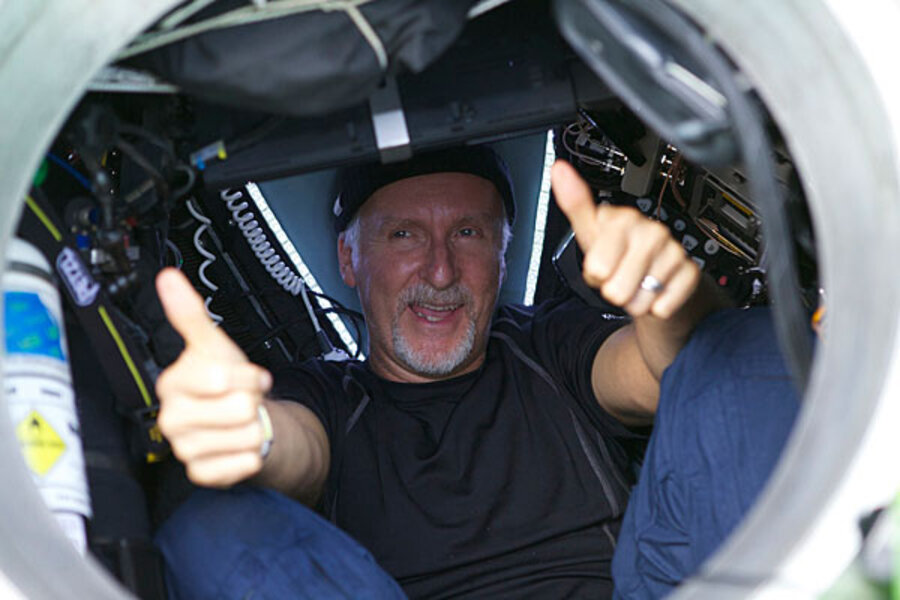How do we know that Challenger Deep is lowest point on Earth?
James Cameron, the Canadian director of "Titanic", "Aliens" – and let's not forget, "The Abyss" – recently emerged from his 35,756-foot dive to the Challenger Deep.
The Challenger Deep is the lowest point in the Mariana Trench, a gap between tectonic plates that stretches 1,500 miles along the western Pacific, and is thought to be the deepest chasm in all the world's oceans. At the bottom the pressure reaches over 15,000 pounds per square inch. By comparison, everyday pressure levels hover around 15 pounds per square inch.
How do we know that Challenger Deep is the deepest point on Earth. Can we be sure that there isn't a deeper spot somewhere?
We can't. Not absolutely. The Challenger Deep was first measured by the HMS Challenger expedition in 1875, a nearly 70,000-mile scientific voyage around the globe that laid the foundations for the modern science of oceanography. To probe the ocean's depths, the Challenger's crew used simple lead weights tethered by long ropes. For this purpose, the vessel carried 144 miles of rope. The first reported depth was 26,850 feet.
In 1951, that figure increased to 35,761 feet when another royal vessel, also named the HMS Challenger, remeasured the depth using a primitive form of sonar: A pulse of sound sent deep to bounce off the abyss, then back topside to the researchers awaiting its return. The official depth would change a few more times after, most recently set on 36,070 feet, a figure confirmed with modern sonar techniques.
This number has a margin of error of about 100 feet, so it's possible that the measured depth of the Challenger Deep could change in the future, or that some other deeper point will be discovered somewhere else. After all, it was only in 1997 that researchers discovered the Sirena Deep, which is also located in the Mariana Trench, which they measured at 35,210 feet, less than a thousand feet shallower than the Challenger Deep.
But it's probably unlikely that we'll find a new deepest point in an entirely different part of the world. Bathymetry, the science of underwater topography, has long been using sophisticated sonar equipment to create digital maps of underwater terrain. Sonar beams sent to the ocean floor are updated many times per second, and verified by Global Positioning Satellites. These maps clearly indicate the Mariana Trench as the deepest of its kind, and so far the Challenger Deep is its lowest measured point. Chances are, if the depth or the location of the world's deepest point ever does change, it won't be by much.





